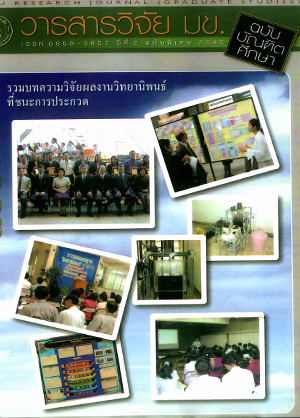A Study on the Sulfate Resistance of Portland Cement Blended with Fly Ash or Rice Husk Ash (การศึกษาความต้านทานการกัดกร่อนของสารซัลเฟตของปูนซีเมนต์ปอรต์แลนด์ ผสมเถ้าลอยหรือเถ้าแลบ)
Keywords:
Portland cement, Fly ash, Rice husk ashAbstract
The sulfate resistance of portland cement blended with fly ash or rice husk ash was studied. The compressive strength, length and weight changes of mortar.> after immersed in a 5% concentration sodium sulfate solution were tested. Portland Cement Type I, fly ash from Mae Moh power plant and ground rice husk ash from open burning of rice husk were used. The blending ratio of portland cement to fly ash or rice husk ash of 80: 20 and 60: 40 were selected.
From the lest, ii was found that the compressive strength of mortars made from portland cement containing fly ash or rice husk ash immersed in sodium sulfate solution were similar to those immersed in water . Whereas the strength at age 90 days of mortars made from portland cement immersed in sodium sulfate solution was significant lower than that immersed in water. From the test of length and weight changes after immersion in sodium sulfate solution, it was found that mortar made from portland cement resulted in largest expansion and highst weight gain. The expansion was due to the reaction of calcium hydroxide and calcium aluminate hydrated from the hydration of portland cement with sulfate which resulted in calcium sulfoaluminate or eltringite. The expansion of mortar made from portland cement containing 20% fly ash was more than mortar made from portland cement containing 40% fly ash but the weight change was lower. The incorporation of fly ash resulted in the reduction of calcium hydroxide and lowered the permeability. Mortar made from portland cement containing rice husk ash showed the least expansion. Mortar made from portland cement containing 409' rice husk ash showed a small shrinkage instead of expansion and a very small weight change. Rice husk ash with high silica content was in a very fine powder form and very high reactive hence it reacted quickly with calcium hydroxide. This resulted in less calcium hydroxide to react with sulfate and hence lower expansion.



